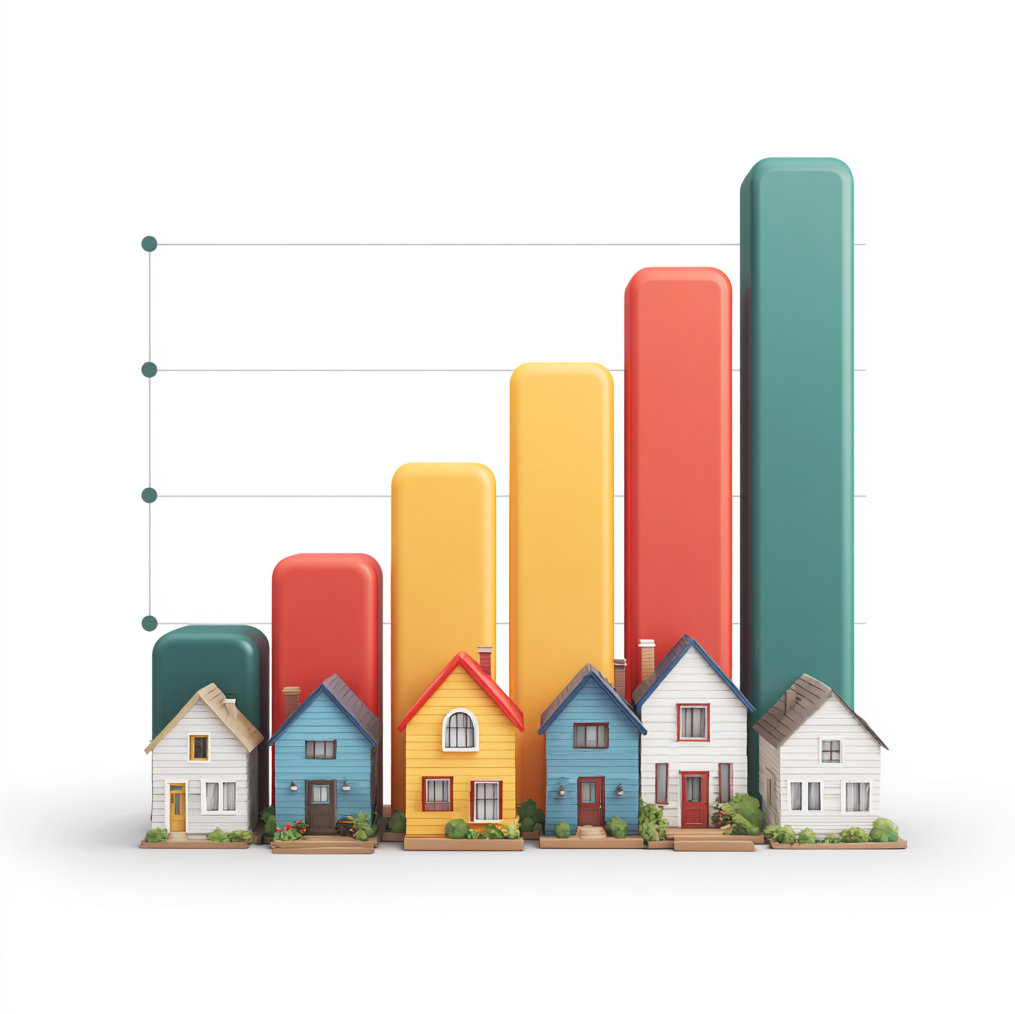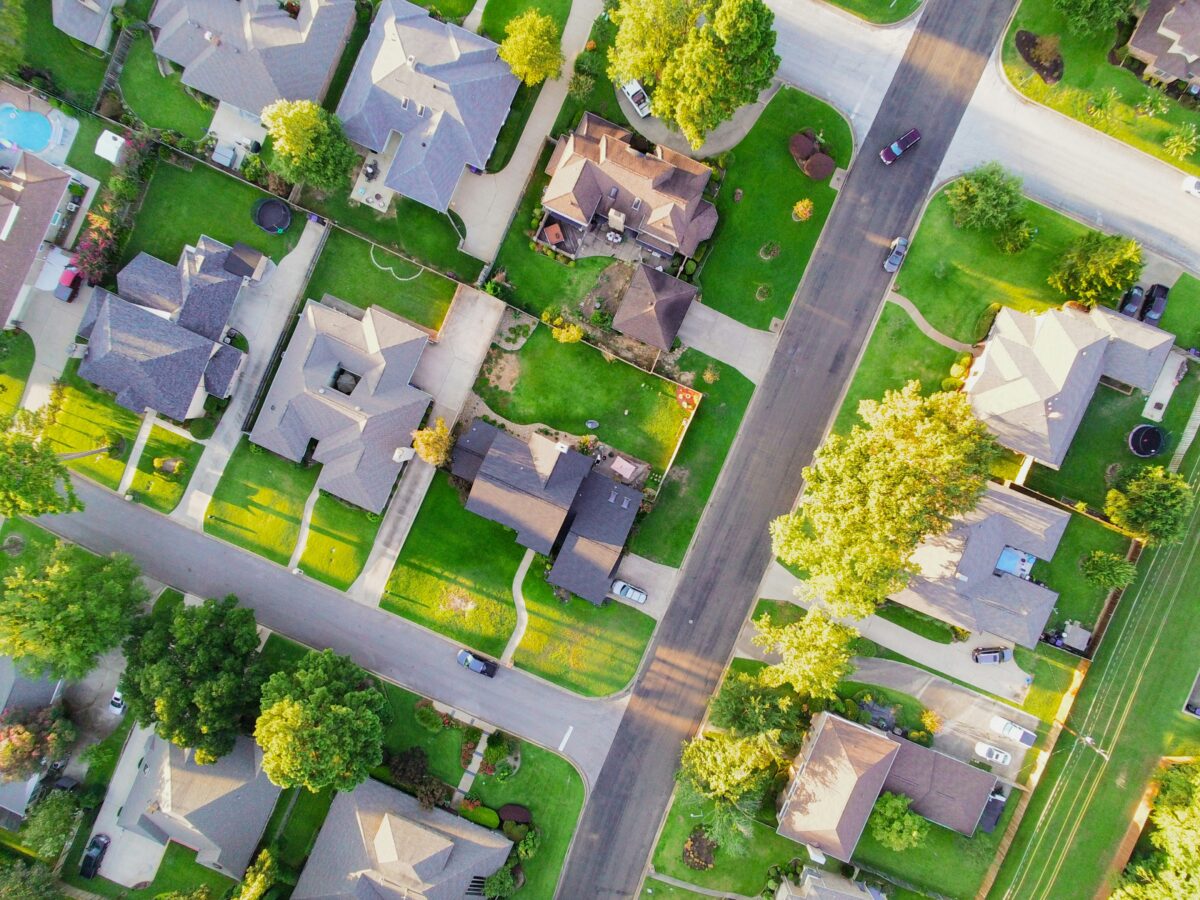Not long ago, a roofing company could rely almost entirely on referrals and storm-driven demand. A few yard signs, a recognizable truck, and word-of-mouth often meant a steady pipeline of work. But as the roofing industry has become more competitive, and as homeowners increasingly rely on Google, voice assistants, and even AI-powered search summaries to choose contractors, understanding how to market a roofing company has become increasingly more important, as implementing the right roofing company marketing strategies has become a key for growth.
What worked when you were a small team doing $700K in revenue won’t carry you when you’re scaling to $5 million and beyond. As presented in the industry standard Peak Performance report, each stage of growth requires a different marketing approach. Spend too little, and you’ll stall out. Spend too much in the wrong places, and you’ll burn through cash without results.
The good news? With the right strategy, roofing companies can build a predictable pipeline of leads that scales as their business grows.
Key Takeaways
In this guide, you’ll learn:
- How roofing marketing evolves at four revenue stages: Sub-$1M, $1M–$3M, $3M–$5M, and $5M+ ARR.
- How to market a roofing company at each stage of growth.
- What percentage of revenue roofing companies should spend on marketing.
- How to allocate that budget across agency fees, ad spend, tools, and team.
- Which roofing company marketing strategies deliver the strongest ROI at each stage.
Why does a roofing company’s marketing strategy need to change as it grows?
A roofing company’s marketing strategy must change as it grows because each revenue stage requires different systems, budgets, and priorities.
Most roofing companies start small: the owner running estimates, a couple of crews on jobs, and marketing limited to a simple website, some business cards, and referrals. At that level, basic tactics can keep the business going.
But as revenue climbs, understanding how to market a roofing company correctly means shifting from survival to scalable systems. That includes refining your funnel, expanding your digital presence, investing in both paid and organic strategies, and eventually building in-house marketing leadership.
Roofing contractors who fail to evolve their roofing company marketing strategies hit a ceiling. Lead flow dries up, competitors get ahead online, and growth slows. Those who adapt their strategy at each stage are the ones who book jobs consistently, expand crews, and build long-term market presence.
What are the four common stages of roofing company growth?
The four common stages of roofing company growth are Sub-$1M ARR, $1M–$3M ARR, $3M–$5M ARR, and $5M+ ARR.
While every business is different, most roofing companies follow a similar path as they expand. Each stage comes with its own challenges, priorities, and roofing company marketing strategies. Knowing these stages helps you set realistic budgets and pick the right approach to market your roofing business.
- Stage 1: Sub-$1M ARR – Focus on building trust, credibility, and local visibility. Marketing is lean but foundational.
- Stage 2: $1M–$3M ARR – Marketing shifts to creating predictable lead flow and brand consistency across multiple channels.
- Stage 3: $3M–$5M ARR – Efficiency and optimization become critical. Companies expand content, improve conversion rates, and add in-house marketing leadership.
- Stage 4: $5M+ ARR – Full funnel campaigns, regional branding, and strong analytics drive scalable growth and long-term stability.
These stages aren’t rigid boundaries but useful milestones. Knowing where you are helps prevent overspending too early or underinvesting when growth opportunities are highest.
What marketing works best for roofing companies under $1M ARR?
The best marketing for roofing companies under $1M ARR focuses on visibility, credibility, and simple lead generation.
At the earliest stage, the business is defined by hustle. The owner wears every hat, crews are small, and cash flow can be unpredictable. You don’t need hundreds of leads; you need the right dozen each month. The goal is not to look big, but to be credible and easy to find when homeowners are searching. This is where learning how to market a roofing company effectively is critical. The foundation—Google Business Profile, reviews, and a reliable website—matters more than big campaigns. Getting these basics right builds long-term credibility, ensures you’re visible where it counts, and helps you compete with established names without overspending.
Recommended marketing strategies:
- Google Business Profile: Claim and fully optimize it—it’s often your biggest early lead source.
- Local SEO: Rank for core intent terms in your city (e.g., roof repair, storm damage, roof replacement).
- Website foundation: A clean, mobile-friendly site with clear calls to action and click-to-call buttons.
- Reviews and referrals: Ask after every job; make it one-tap simple for customers to leave feedback.
- Targeted PPC: Modest campaigns for high-intent keywords; pause what doesn’t convert.
Suggested budget & allocation:
- Total marketing: 7–10% of revenue (≈$50K if you’re at $700K ARR).
- Agency/consultant: $18K–$36K annually (site, GBP, SEO basics, light PPC).
- Ad spend: $12K–$36K annually (seasonality + storm response).
- Tools & website: $3K–$6K annually (hosting, reviews, call tracking).
Success at Sub-$1M isn’t about doing everything; it’s about focusing on the roofing company marketing strategies that bring consistent results and align with your current growth stage. If you can generate repeatable leads from GBP, reviews, local SEO, and a small PPC test, you’ll stabilize cash flow, keep crews busy, and set the stage to scale. The signal you’re ready for Stage 2 is when you’re booking jobs predictably, closing rates are steady, and you’re prepared to invest in systems that reduce the need for you to micromanage campaigns.
What marketing helps roofing companies between $1M and $3M ARR?
The most effective marketing for $1M–$3M ARR roofing companies builds predictable lead flow with multi-channel marketing and a stronger brand.
Crossing the $1M mark is a major milestone. It shows the market trusts you, your crews are productive, and your processes work. The challenge now isn’t proving you belong, it’s ensuring your lead flow doesn’t dry up between storm events or busy seasons. To keep multiple crews busy, you need steady demand across channels. That requires a stronger digital footprint, better follow-up, and roofing company marketing strategies that move homeowners from first click to signed contract.
Recommended marketing strategies:
- Robust SEO: Local landing pages for each service area + in-depth service pages to improve relevance.
- PPC & retargeting: Capture immediate demand; retarget visitors who didn’t convert on first touch.
- Social proof engine: Before/after posts, job highlights, video testimonials; amplify on social.
- CRM + email/SMS: Automations for estimates, reminders, reviews, and referrals.
- Brand consistency: Cohesive visuals (site, trucks, proposals) to lift conversion rates.
- Selective offline: Community sponsorships or direct mail where the cost per lead is favorable.
Suggested budget & allocation:
- Total marketing: 8–10% of revenue (≈$160K at $2M ARR).
- Agency/in-house hybrid: $50K–$100K annually (multi-channel strategy and execution).
- Ad spend: $36K–$100K annually (Google Ads, LSAs, Meta Ads; allocate by ROAS).
- Content, CRO, creatives: $10K–$30K annually (landing pages, video, photography).
- Tools & reputation: $2K–$5K annually (CRM, reviews, call tracking, dashboards).
Stage 2 is where you move from chasing leads at any cost to roofing company marketing strategies that scale. Tighten tracking, know your cost per lead and cost per acquisition by channel, and double down where the math works. When organic traffic grows month over month and paid campaigns hit reliable ROI, you’re ready to expand service areas, add more crews, and move into Stage 3.
How should roofing companies market themselves at $3M–$5M ARR?
Roofing companies at $3M–$5M ARR should focus on efficiency, optimization, and smart expansion.
At this level, you’ve proven staying power. Your phone rings, crews are busy, and you’re competing with larger, established players. The challenge is no longer generating leads; it’s squeezing more value from the leads you already have, while preparing for geographic and service expansion. Marketing shifts from being about acquisition to being about efficiency: optimizing conversion rates, lowering cost per lead, and strengthening brand credibility. This is also the time to refine how to market a roofing company with scalable processes so your brand becomes the first choice in more neighborhoods.
Recommended marketing strategies:
- Advanced SEO + content engine: Editorial calendar for blogs, guides, and city pages; add video.
- Conversion rate optimization: A/B test headlines, forms, calls to action; improve site speed and usability.
- Smarter paid media: Retargeting, lookalikes, dynamic creative; protect your brand terms.
- Community presence: Sponsorships, events, PR—trust at scale boosts close rates.
- In-house capacity: Hire a marketing manager and a content/creative role; keep agency for specialists.
- Attribution discipline: Track leads to revenue; use call tracking and UTM parameters.
Suggested budget & allocation:
- Total marketing: 7–10% of revenue (≈$320K at $4M ARR).
- Team + agency: $96K–$180K annually (leadership + specialist support).
- Ad spend: $100K–$250K annually (multi-market campaigns; seasonal adjustments).
- Content/video/brand assets: $20K–$50K annually.
- Tools & automation: $5K–$15K annually (dashboards, reporting, integrations).
Stage 3 winners are defined by efficiency and control. They know their conversion rate by landing page, their CPL by ad group, and which neighborhoods or service types deliver the best ROI. With that insight, you can expand into new markets, add complementary services, and still maintain margins. The moment your operations can handle more volume and your marketing consistently delivers qualified leads, you’re ready for Stage 4.
What marketing drives growth for roofing companies over $5M ARR?
Roofing companies over $5M ARR grow best by balancing full funnel campaigns with brand leadership and analytics.
At $5M and beyond, you’ve established yourself as more than just a local roofer; you’re now seen as a regional leader. The challenge is not about generating enough leads but about sustaining growth, protecting market share, and expanding without overspending. This requires building an in-house marketing team, running full funnel campaigns across multiple platforms, and strengthening analytics so every dollar is accounted for. At this stage, knowing how to market a roofing company at scale is critical, because homeowners expect you to look and act like a trusted brand.
Recommended marketing strategies:
- Full funnel orchestration: SEO, PPC, LSAs, social, video, CTV, and outdoo, where effective.
- Brand campaigns: Invest in quality creative and consistent storytelling across markets.
- Analytics & attribution: Multi-touch where possible; standardized reporting across branches.
- In-house marketing org: Director plus channel specialists (SEO, PPC, Content, Design, Video).
- Market expansion: Playbooks for launching new cities; PR and partnerships to accelerate trust.
- Customer lifecycle: Loyalty, maintenance plans, and systematic review/referral programs.
Suggested budget & allocation:
- Total marketing: 5–9% of revenue (≈$640K at $8M ARR).
- Internal team: $200K–$400K annually (leadership + specialists).
- Ad spend: $200K–$600K+ annually (multi-region media mix; brand + demand).
- High-end creative & campaigns: $50K–$200K annually.
- Data & tooling: Increased investment for attribution, BI, and forecasting.
Stage 4 is about building a lasting advantage. You’re creating brand recognition, reliable customer experience, and precise data-driven allocation of marketing spend. With a testing culture and a professional team, you’ll stay ahead of competitors, protect market share, and keep scaling even as ad costs rise and algorithms shift.
Final Takeaway: Why must roofing marketing evolve at every stage?
Roofing marketing must evolve at every stage because growth depends on adapting strategy, not repeating old tactics.
Roofing companies that thrive know that learning how to market a roofing company is not one-size-fits-all. The strategies and budget that fuel growth at $700K won’t sustain you at $5M+. The key is to evolve:
- Start with visibility and trust.
- Scale into consistent lead flow.
- Optimize for efficiency and expansion.
- Invest in brand and systems to dominate your market.
Marketing is no longer optional; it’s the foundation of predictable growth. With the right roofing company marketing strategies at each stage, you can go from a single crew to a market-leading brand.
Ready to scale your roofing business with a marketing strategy built for your stage of growth?
JobNimbus Marketing helps roofing and exterior companies build stage-appropriate marketing systems that deliver measurable results. From Search Engine Optimization (SEO) and Google Business Profile (GBP) optimization to media buying and analytics, we tailor the plan to your goals, team, and timeline.
Schedule your free strategy session today and start building the marketing foundation your business needs to grow.
FAQs: Roofing Marketing Growth Facts
How much should a roofing company spend on marketing at each stage?
A roofing company should spend 7–10% of revenue under $1M ARR, 8–10% at $1M–$3M ARR, 7–10% at $3M–$5M ARR, and 5–9% at $5M+. Spending at the higher end makes sense when entering new markets or competing in crowded areas.
How should a roofing company split its budget between agency fees, internal team, and ad spend?
A roofing company in the early stages should expect 30–50% of the budget to go to agency support. As the company grows, more of the budget should shift to in-house roles (15–30%) and media spend (40–60%), while agencies continue to handle specialized channels.
What’s the fastest way for a roofing company to generate leads?
The fastest way for a roofing company to generate leads is by using Google Local Services Ads and targeted Google Ads for high-intent keywords. Adding retargeting campaigns helps too, while improving GBP and reviews boosts conversion.
How long does it take for roofing SEO and content to start working?
Roofing SEO and content usually show progress in 3–6 months, with stronger gains at 6–12 months. Publishing service pages, city pages, and Q&A-style blogs builds results in both search and voice.
When should a roofing company hire in-house instead of using an agency?
A roofing company should consider hiring in-house between $3M–$5M ARR. At that stage, most benefit from a marketing manager to lead strategy and coordination, while agencies handle specialized execution like SEO, PPC, video, and CRO.
How can a roofing company know if its marketing is working?
A roofing company can measure marketing effectiveness by tracking cost per lead, cost per acquisition, close rate by channel, average job value, and revenue from marketing sources. Tools like call tracking, UTM parameters, and a CRM make it easier to measure results and adjust budget with confidence.
Table of Contents
Keep on learnin'
Related Articles

Top 5 Marketing Mistakes Contractors Make (and How to Fix Them)

Turn Job Photos into Social Media Content That Gets Real Engagement

How to Build an Organic Facebook Strategy That Attracts Homeowners



